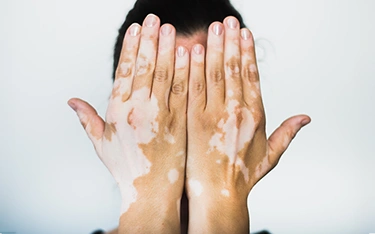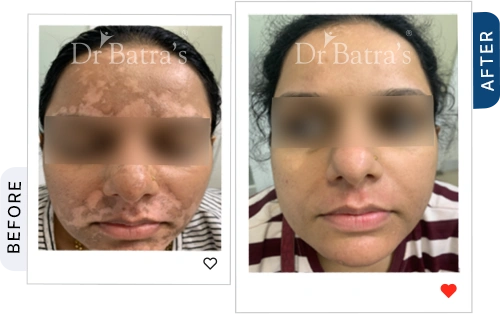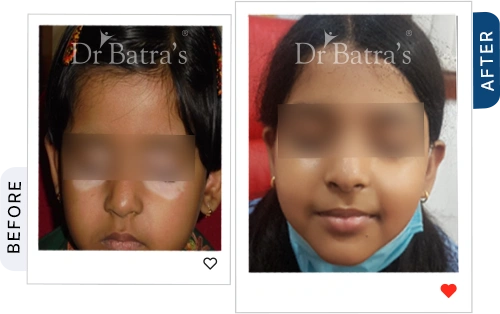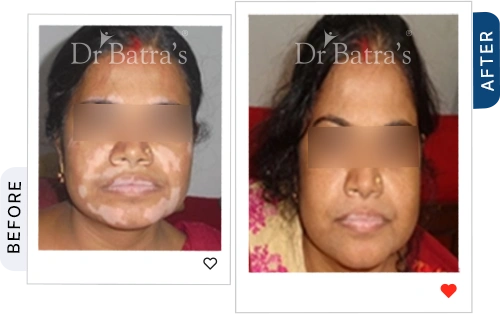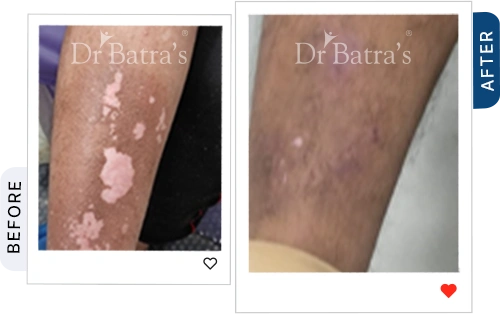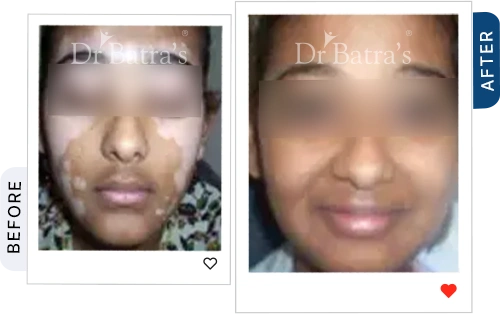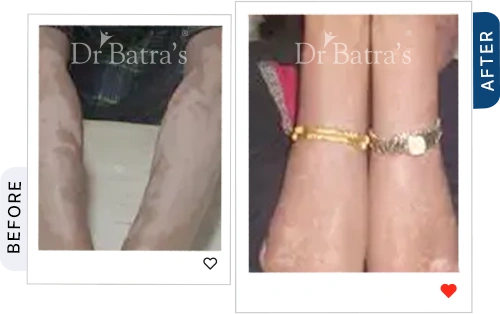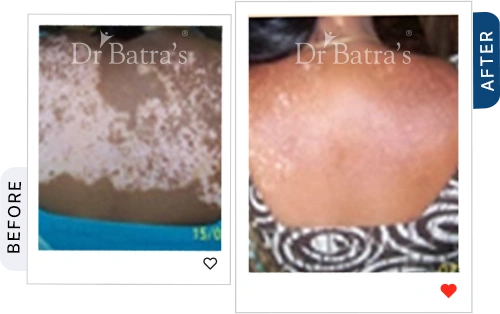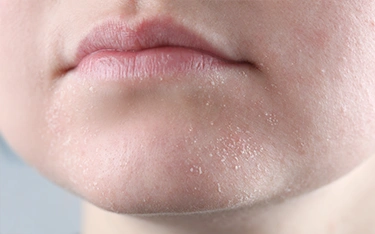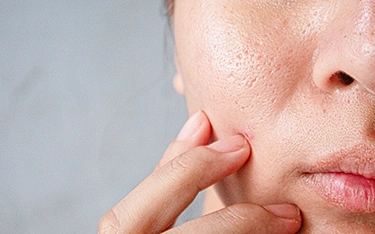Imagine waking up one day and noticing a small, pale patch on your skin. At first, you ignore it, thinking it’s just a dry spot or a temporary change. But over time, it grows, spreads, and refuses to fade. Slowly, more patches appear, on your hands, face, or other parts of your body. What’s happening? Could it be vitiligo?
Vitiligo skin disease is an autoimmune skin disease that causes loss of melanin, the pigment responsible for your natural skin colour. While not painful, it can deeply impact self-esteem. The earlier you recognise the vitiligo early symptoms, the better your chances of managing its spread.
What are the Symptoms of Vitiligo?
The starting signs and symptoms of vitiligo disease can range from minor discolouration to large areas of depigmentation.
- White or pale skin patches, especially on sun-exposed areas (face, hands, arms, and feet)
- Premature greying of hair on the scalp, eyebrows, eyelashes, or beard
- Loss of colour inside the mouth, lips, and other mucous membranes
- Symmetrical depigmentation, meaning patches appear on both sides of the body
- Loss of skin colour around body openings, such as the eyes, nostrils, and genital area
Dr Batra’s® pro tip:
If you're noticing white patches along with fatigue or weight changes, get your thyroid function tested. Vitiligo often coexists with thyroid issues, and managing them early can slow the condition’s progression.
Early Signs of Vitiligo
Recognising the starting symptoms of vitiligo can help in early intervention. While early signs are often subtle, understanding them along with vitiligo causes can guide timely action.
- A small, pale, or white patch that slowly expands
- Increased skin sensitivity to the sun, with patches burning easily
- Mild itching or tingling before the skin starts losing colour
- Depigmentation around the fingertips, lips, or eyes, areas where vitiligo often begins
Progression of Vitiligo – How It Spreads
Vitiligo spreads differently for everyone. In some cases, it remains localised, while in others, it progresses rapidly. The speed and extent of spread depend on factors like genetics, autoimmune activity, and lifestyle habits.
Types of vitiligo progression:
- Localised Vitiligo: Stays in one area
- Generalised Vitiligo: Appears on multiple parts of the body symmetrically
- Universal Vitiligo: Results in nearly complete depigmentation
Types of Vitiligo and Their Initial Symptoms
- Segmental Vitiligo
- Spreads rapidly but usually remains limited to one side of the body.
- Often appears during childhood or teenage years.
- Initial symptoms include patches that quickly stabilise and rarely spread further after the first year.
- Non-Segmental Vitiligo
- The most common type appears symmetrically on both sides of the body.
- Initial symptoms start as small white patches that gradually spread across multiple areas.
- Commonly affects hands, arms, feet, and around body openings like eyes and mouth.
- Focal Vitiligo
- Limited to a small area and does not spread much beyond its original spot.
- Initial symptoms often show as one or two isolated white patches.
- It may remain stable for years without significant progression.
- Mucosal Vitiligo
- Affects lips, gums, and other mucous membranes.
- Initial symptoms include depigmentation around the mouth, inside the nose, or in sensitive areas.
- It may appear alone or along with other types of vitiligo.
The Starting Symptoms of Vitiligo in Children
- White patches appear before age 10
- Children often show the first signs of vitiligo very early in life.
- These patches are usually lighter than the surrounding skin and may become more noticeable with sun exposure.
- Skin around knees, elbows, and eyes loses color
- Depigmentation commonly begins at friction-prone areas like knees and elbows.
- The skin around the eyes is also sensitive, and white patches here are one of the earliest indicators.
- Faster spread than in adults
- Vitiligo in children tends to progress more quickly compared to adults.
- Multiple patches can develop within a short period, making early diagnosis and treatment especially important.
